 Rita Galkina
Rita Galkina Guiri Uribe
Guiri Uribe Joana Gröblinghoff
Joana Gröblinghoff Mallory W
Mallory W Austin Levine
Austin Levine
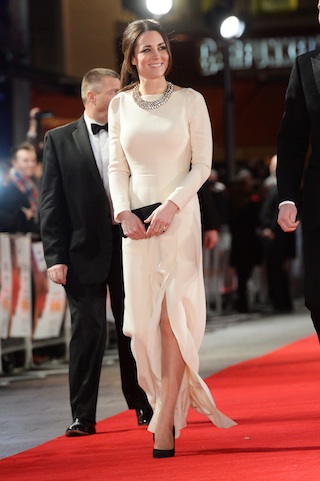
While Art Basel Miami Beach is technically an art show, it's best known for being a place where the fashion, art, and celebrity sets collide to rage all week long. The party circuit kicked into full gear on Wednesday night with a host of soirees, including dinners hosted by Louis Vuitton and Swarovski that brought out notables such as supermodels Karolina Kurkova and Cindy Crawford. The latter chose a Roberto Cavalli body-con dress patterned with baroque swirls and a tweed print for the Vuitton fete, while Kurkova opted for a red long-sleeve David Koma Fall '13 dress with nude mesh detailing on the neckline and sleeves at the Swarovski dinner. The following day, Louis Vuitton's Fall campaign face, Michelle Williams, donned a full Vuitton look for the brand's beach barbecue, layering a navy sweater over a red-and-white striped dress.
Across the pond, Kate Middleton mixed highs and lows on the red carpet, pairing a sparkling Zara necklace with a cream long-sleeve Roland Mouret gown at Thursday's royal premiere of Mandela: Long Walk to Freedom in London. As the credits rolled, the Duchess of Cambridge joined Nelson Mandela's daughters and the film's cast and crew in paying tribute to the revolutionary leader, who passed as the film was being screened.
On Tuesday, Keira Knightley made a return to the red carpet for London's Serious Fun gala, stepping out in a dress we've seen her in several times before—including at her wedding this past spring. For this outing, she added sheer sleeves with embroidery at the wrists and neckline to make it more appropriate for the city's chilly weather.
Here, more of this week's red-carpet highlights.
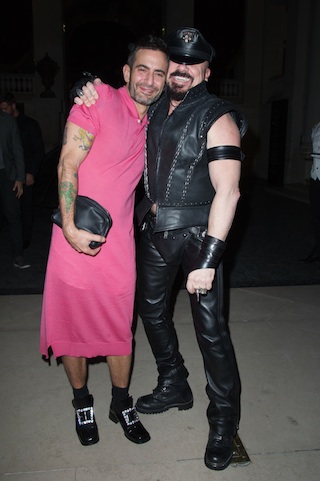
Last night in London, Marc Jacobs and his pal and collaborator, the legendary, leather-clad interior architect Peter Marino (you know, the Mohawked character who's designed stores for everyone from Chanel to Louis Vuitton), sat down for a candid discussion at the Tate Modern. Topics ranged from Marino's latest art acquisition (a Christopher Wool, whose retrospective is currently on view at the Guggenheim) to Jacobs' final Louis Vuitton set ("I didn't know what to do, so we did it all in black," he said). Jacobs somewhat surprisingly revealed that even superstar designers get scared—especially when it comes to taking their companies public, as he is in the process of doing. "[It's] a healthy fear," he offered. "I don't know where it's all going to go. I learned a lot from working for Vuitton." And how does Jacobs feel about his successor at the storied French house? "He is a brilliant designer, and he'll do something completely different. I've always admired Nicolas [Ghesquière]. I'm curious to see what he'll do. We have such different aesthetics. Things need to change. I'm really glad someone I respect and admire and think is a really great talent is there."
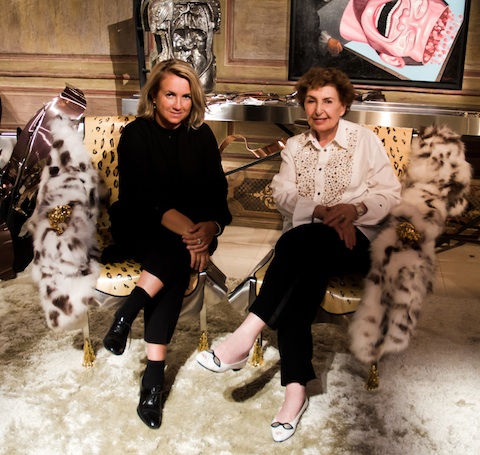
The house of Fendi has long held close ties to the world of design. While everyone else was (and is) collaborating with artists (this year's Art Basel brings Ryan McGinley for Calvin Klein and Visionaire for Gap, to name just a couple), Fendi was focusing on its own cross-pollination. Silvia Venturini Fendi, daughter of Anna Fendi and mother of Delfina, has been at the forefront of the house's push toward contemporary design since founding Fendi Casa in 1997—applying the brand's playful, irreverent aesthetic to specially commissioned projects with forward-thinking designers, including Aranda/Lasch, Beta Tank, and Toan Nguyen. This week, Fendi Casa is introducing a new capsule collection of steel- and fur-based items with famed Paris furniture designer Maria Pergay. We sat down with Venturini Fendi at the pool by The Standard Spa to discuss her work with Pergay, how Fendi Casa fits into the house's larger vision, and why Karl Lagerfeld never—and always—shocks.

Last night, in Tommy Hilfiger's sprawling Fifth Avenue flagship, the brand and GQ invited guests to the second annual Men of New York bash. Four men were recognized for their contributions to the city this year: actor Josh Charles, New York Giants wide receiver Victor Cruz, television host Carson Daly, and chef and restaurateur John DeLucie. Naturally, each gent was outfitted head to toe in Tommy Hilfiger.
"Tommy is somebody who, when I first moved to New York, was very supportive of me at MTV," Daly said of his Total Request Live days. "I only had cargo shorts from California—I was a radio deejay—and he gave me my first suit, and it was really special."
While the Misshapes deejayed from the mezzanine, guests hobnobbed and, more important, shopped, with proceeds of their sales going to the Fresh Air Fund, an organization that enables inner-city children to enjoy free outdoor camping holidays. Unfortunately, Hilfiger himself was stuck in Miami due to a travel snafu, but his CEO of North America, Gary Sheinbaum, shed light on the evening's honorees. "These are all-American guys who are very successful in what they do, and they're all highly respected in their fields—it was natural for us."
"It's humbling for me just to be a part of [something with] these well-distinguished men, and to continue to represent New York City in a positive way," offered Cruz. Charles, too, expressed his admiration for his fellow men of New York—and one in particular. "I'm a big fan of Victor's…I got a little shy when I met him!" He, like the other honorees, has had a unique love affair with New York. "Anytime I travel, I always feel good when I come home because New York has everything."
DeLucie, who has opened up a number of restaurants over the past twenty-two years, including The Lion and The Wavery Inn, summed up his city's draw nicely. "There's something about New York, where you get this crush of people that's maddening, invigorating, and thrilling all at the same time."
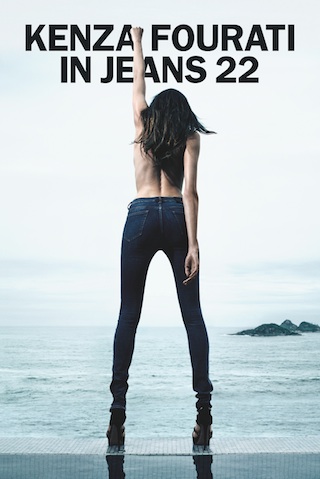
If you live below Fourteenth Street, you're going to be seeing a lot of Kenza Fourati tomorrow. The Tunisian model is the star of cult downtown basics label BLK DNM's latest "Wild" campaign. Lensed by the brand's founder and creative director, Johan Lindeberg, the images have become BLK DNM's signature, though slightly unorthodox, mode of advertising. Lindeberg takes raw snaps of models like Gisele, Caroline de Maigret, and Karen Elson in BLK DNM's second-skin jeans and leather jackets, turns them into posters, and plasters them across downtown Manhattan. It's a bit of a guerrilla approach, if you will.
The newest installment, which was shot last week during a trip to Rio de Janeiro, has a particularly powerful message. Fourati is highly active in the political and social revolution in her native Tunisia, and Lindeberg wanted her strength to come through in the snaps. "The scenery was beautiful, but the shoot was dangerous, because Kenza was standing on a ledge. But she didn't care," Lindeberg told cbamd.com. "She just raised her fist to the sky spontaneously. I could feel that her energy was real—that she felt the same feeling that she does on the streets of Tunis, protesting, shouting, 'Degage, let go!" to the former government. The pure energy is the strength of the picture." Catch the campaign's debut here, exclusively on cbamd.com.
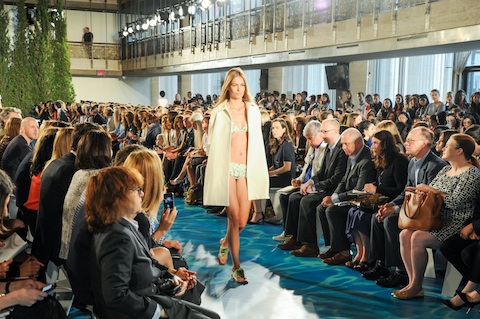
Change is a comin' for Fall '14. Today IMG announced its plans to revamp the frenetic circus that is New York fashion week via redesigned Lincoln Center venues with smaller audience capacities and bigger backstage spaces. The hope? That the update will reduce the presence of crowds, celebrity stalkers, miscellaneous non-fashion-related showgoers, aspiring street-style stars hoping to get papped, and general riffraff that often turns the delight that is NYFW into a bit of a hassle (to put it lightly) for buyers, journalists, stylists, and other industry professionals. Yesterday The Wall Street Journal reported that it's going to be decidedly harder to get tickets this season. An IMG representative told the paper that media guests will be cut by 20 percent in an effort to focus on attendees who are "of value to the designer." (Oscar de la Renta deserves a shout-out here—the designer lead the way by significantly reducing the number of guests at his Spring '14 outing.) Less "valuable" fashion fans will be able to watch shows online, as IMG plans to live-stream as many runways as possible.
Also part of the revamp is the Hudson Hub—a space geared toward emerging designers. In comparison to the bigger Lincoln Center venues, which will cost about $45,000 a pop, the Hub will be priced at $15,000 per show. That's a $3K price decrease from The Box, Mercedes-Benz Fashion Week's previous new-talent-focused venue, for which the fee was $18,000. The price dip is hardly competition for Made at Milk Studios, where the show space for lucky rising stars is free, but we guess it's a start.
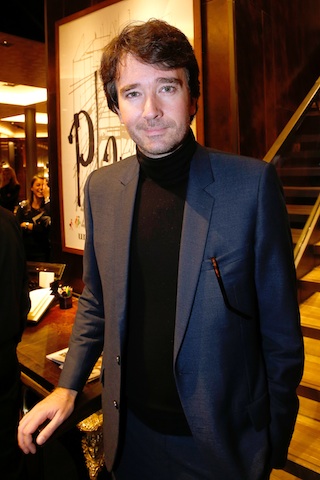
LVMH's acquisition of Loro Piana—the Italian house known for its super-luxe cashmere and wool wares—earned its final approvals today. And to seal the deal, LVMH appointed Antoine Arnault (son of LVMH CEO Bernard Arnault) as the brand's chairman, reports WWD. This is just one example of the Arnault children's increasing responsibility in their father's company: Antoine is also the CEO of menswear house Berluti, and his sister, Delphine, stepped into the role of executive vice president of Louis Vuitton this summer. Delphine also helped spearhead LVMH's new young designer prize, which, announced last month, will award the winning talent with 300,000 euros.
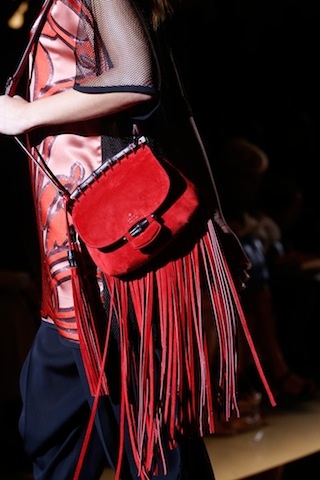
With the holidays in full swing, we're in a festive spirit here at cbamd.com. And when it comes to party looks, we're feeling for fringe—the stuff was all over the Spring '14 runways. Imagine twirling on the dance floor in the white leather jacket from Altuzarra, or shimmying about in Emilio Pucci's glam poncho. Decorative tassels added an artisanal touch at Dries Van Noten, Marc Jacobs, and Alexander Wang, while dense, carpetlike shag turned up at Proenza Schouler and 3.1 Phillip Lim. If a full-on fringy outfit is too much for you, get the look with a bohemian handbag similar to the ones we spotted at Celine, Valentino, and Gucci.
Here, a slideshow of our favorite fringed pieces.
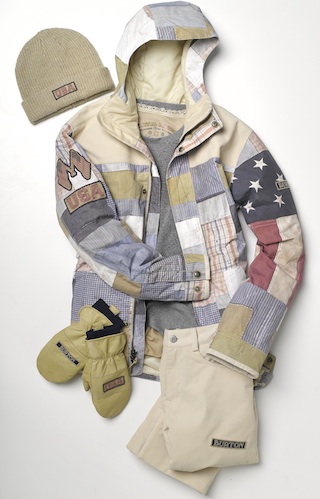
Ralph Lauren won't be the only one outfitting America's athletes for the 2014 Winter Olympics in Sochi. Burton, too, has created some duds for the competitors—specifically, the snowboarding team. The kit's oatmeal wool beanies, camel long johns, and eggshell yellow gloves don't exactly scream patriotism. However, with their weathered stars and stripes motifs, the patchwork cream, blue, gingham, and plaid hooded parkas scream vintage Americana. Go forth and shred it in style, Team U.S.A.
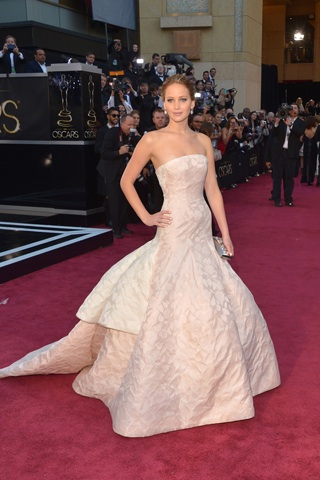
Time's annual Best- and Worst-Dressed Lists came out today. Not surprisingly, Jennifer Lawrence nabbed the top spot in the best-dressed category for her Dior Oscar gown (yes, yes, the one she fell in). Also not surprising was the worst-dressed starlet of the year, Miley Cyrus, who earned the dishonor for her nude underwear and giant finger VMA ensemble—or lack thereof. However it's not all bad news for Hannah Montana. Cyrus also ended up in the No. 6 spot on the best list, thanks to a decidedly less revealing backless Marc Jacobs gown. Check out Time's full rundown here.